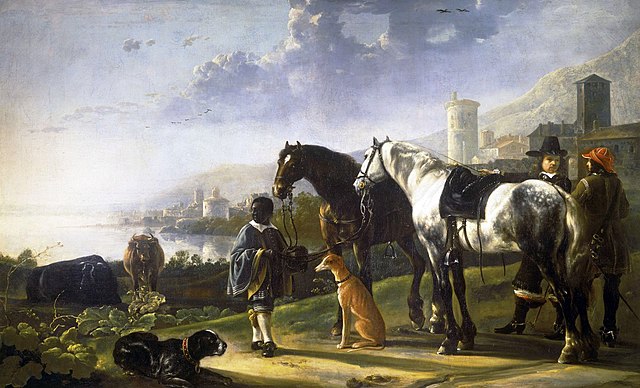Aelbert Jacobszoon Cuyp or Cuijp was one of the leading Dutch Golden Age painters, producing mainly landscapes. The most famous of a family of painters, the pupil of his father, Jacob Gerritszoon Cuyp (1594–1651/52), he is especially known for his large views of Dutch riverside scenes in a golden early morning or late afternoon light. He was born and died in Dordrecht.
The Maas at Dordrecht, c. 1650, showing the Maas River in front of Cuyp's hometown of Dordrecht, National Gallery of Art
The Negro Page, circa 1652, Royal Collection
Piping Shepherds, Metropolitan Museum of Art
Herd of Sheep at Pasture, 1650, Städelsches Kunstinstitut
Dutch Golden Age painting
Dutch Golden Age painting is the painting of the Dutch Golden Age, a period in Dutch history roughly spanning the 17th century, during and after the later part of the Eighty Years' War (1568–1648) for Dutch independence.
Johannes Vermeer, The Milkmaid (1658–1661)
Frans Hals' tronie, with the later title Gypsy Girl. 1628–30. Oil on wood, 58 cm × 52 cm (23 in × 20 in). The tronie includes elements of portraiture, genre painting, and sometimes history painting.
Paulus Potter, The Young Bull (1647); 3.4 metres wide. An unusually monumental animal painting that challenges the hierarchy of genres.
The Haarlem Painter's Guild in 1675, by Jan de Bray, whose self-portrait is the second from the left








